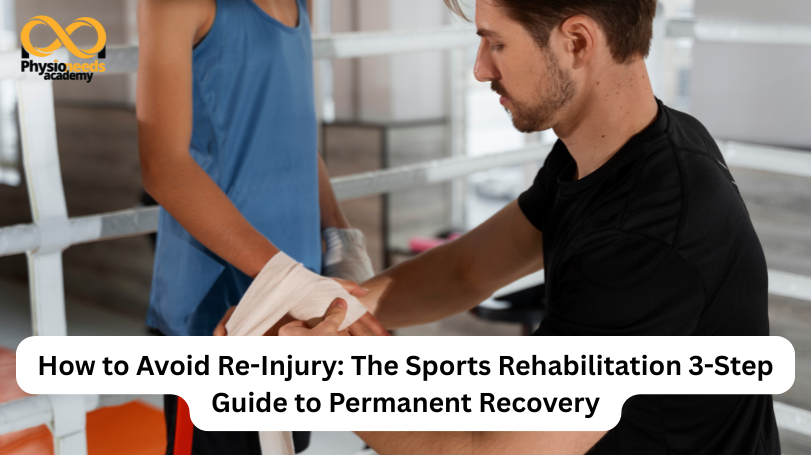There are no items in your cart
Add More
Add More
| Item Details | Price | ||
|---|---|---|---|

For any athlete, returning to play after an injury can be both exciting and nerve-wracking. The biggest fear is always the same — getting hurt again. That’s where the Sports Rehabilitation Course comes in. This structured, evidence-based approach not only helps you recover faster but also ensures your body becomes stronger and more resilient than before. Whether you’re a professional athlete, physiotherapist, or fitness coach, understanding how to prevent re-injury is essential for long-term success.
Many athletes rush their return to sport. They feel better, but their body might not be fully ready. Often, pain subsides before the injured tissues are strong enough to handle full activity. Without proper recovery steps, balance, flexibility, and strength can remain compromised. This imbalance increases the risk of the same injury happening again — sometimes even worse than before.
The key to Avoid Re-Injury is not just healing but rebuilding the body’s full function step by step. That’s what makes a structured rehabilitation plan so important.
Step 1: Assess and Restore
Every recovery journey starts with a clear assessment. A skilled therapist identifies what caused the injury — poor movement, muscle imbalance, or overuse. Then, targeted therapy begins to restore mobility and stability. Simple yet powerful techniques like stretching, joint mobilization, and corrective exercises help regain natural motion safely.
Step 2: Strengthen and Stabilize
Once pain and mobility improve, the focus shifts to strength. Controlled resistance training rebuilds the muscles that protect the joints. This phase is about stability — teaching your body to control movement under pressure. Therapists often include core work, balance drills, and sport-specific exercises to prepare the body for higher demands.
Step 3: Train and Transition
In the final phase, athletes progress to performance training. Here, the goal is to simulate real sports movements. Drills like jumping, sprinting, and quick direction changes help the body adapt safely to stress. This is the stage where confidence returns — knowing your body can perform without breaking down. With these three steps, athletes not only recover but also develop smarter movement habits that lead to Permanent Recovery.
The goal of every recovery program should be long-lasting results — not just quick fixes. A structured and well-guided rehabilitation plan helps you move better, feel stronger, and perform with confidence. When you invest in proper recovery, you’re not just treating an injury; you’re protecting your future in sports and fitness.
Condition: Ankle Sprain
Reduce pain first, then rebuild strength and balance, and finally return to sport with controlled drills.
Condition: Knee Pain (Runner’s Knee)
Ease irritation, strengthen thigh and hip muscles, and slowly increase running volume to prevent overload.
Condition: Shoulder Impingement
Release tight muscles, strengthen shoulder stabilizers, and improve posture during training.
Condition: Lower Back Strain
Settle pain, build core strength, and restore proper lifting and movement patterns.